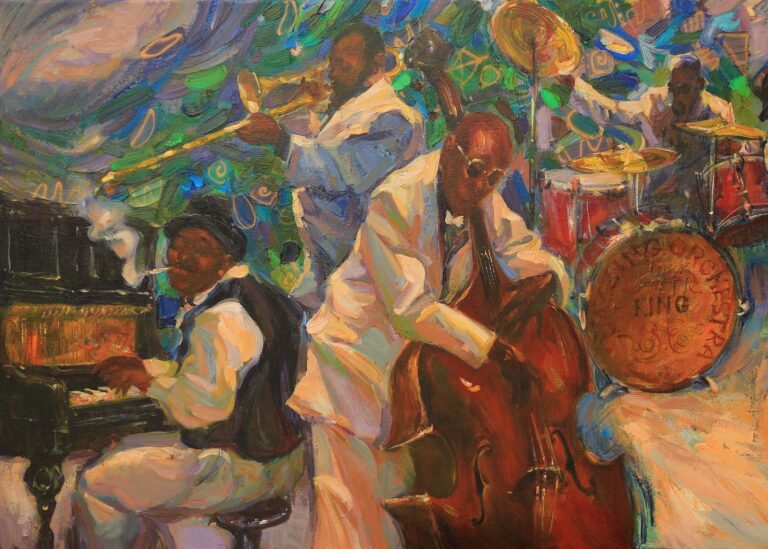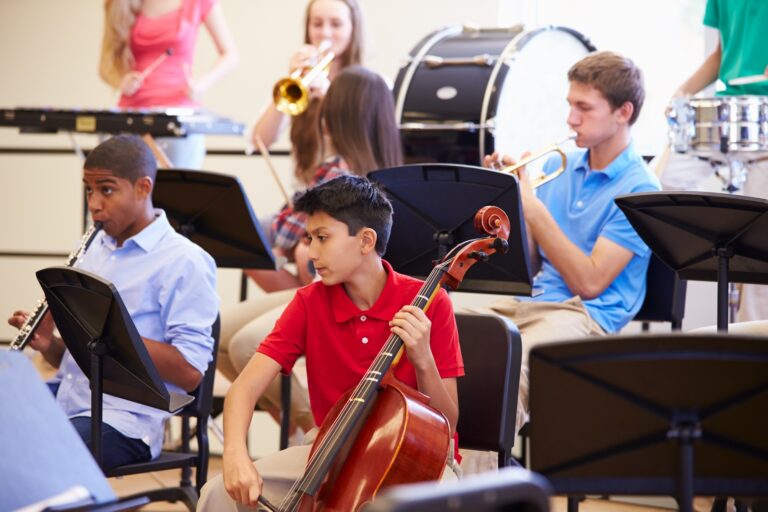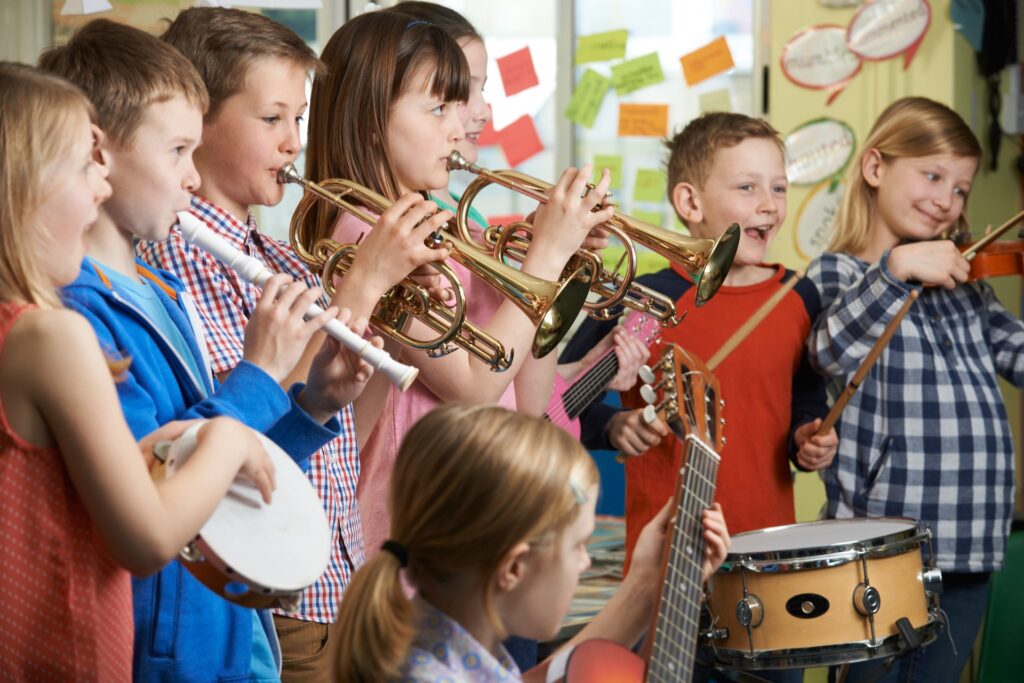
Hey there, music makers! I’m absolutely thrilled to share this collection of 25 classical pieces that are PERFECT for first-year band students! Every single piece on this list has been carefully selected because it’s specifically appropriate for beginners – we’re talking simple rhythms, comfortable ranges, and accessible fingerings that won’t overwhelm your students while still giving them that amazing feeling of playing real classical music!
1. First Suite in E-flat Major by Gustav Holst
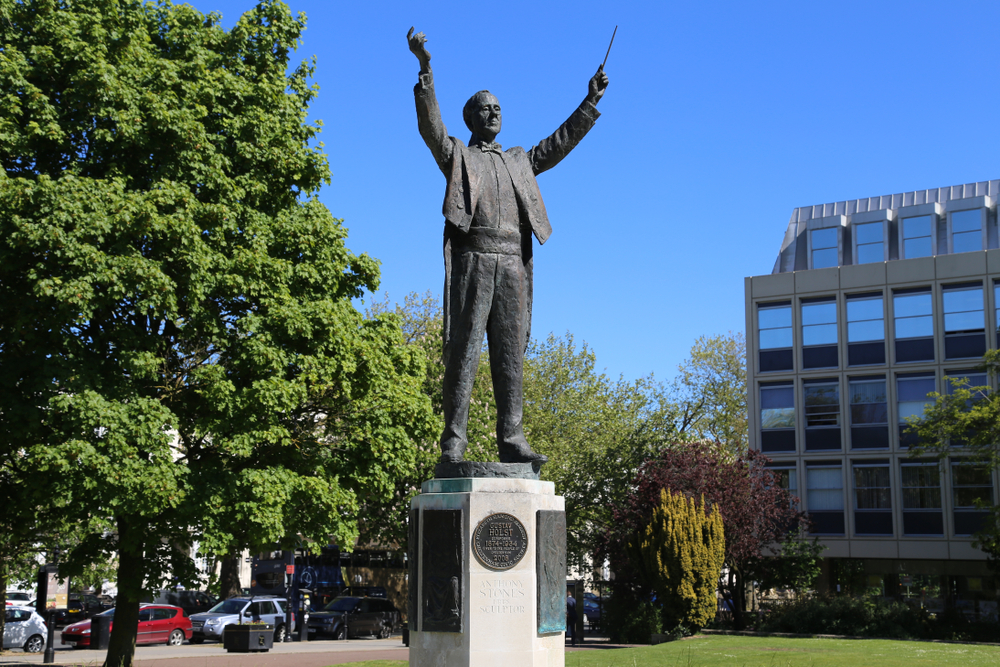
Gustav Holst’s masterpiece is a perfect starting point for your band journey! Composed in 1909, this cornerstone work in the concert band repertoire has three distinct movements that will challenge and delight your ensemble.
The opening “Chaconne” introduces a simple eight-measure theme that builds beautifully. You’ll love how this movement teaches your students about musical development while keeping the technical demands manageable for first-year players.
The playful “Intermezzo” offers a fantastic contrast with its light, bouncy feel. This middle section gives your woodwinds a chance to shine with melodic passages that will improve their expressive playing.
The concluding “March” brings everything together with energy and excitement! This movement reinforces fundamental band skills while giving percussionists special moments to demonstrate their importance to the ensemble.
When learning this piece, start with the main theme from the “Chaconne” – it appears throughout the suite and serves as an excellent warm-up exercise. The clear structure makes it easy to break into digestible sections for rehearsals.
You’ll find excellent recordings online to inspire your students, including performances by the North Texas Wind Symphony!
2. Seventy Six Trombones by Meredith Willson
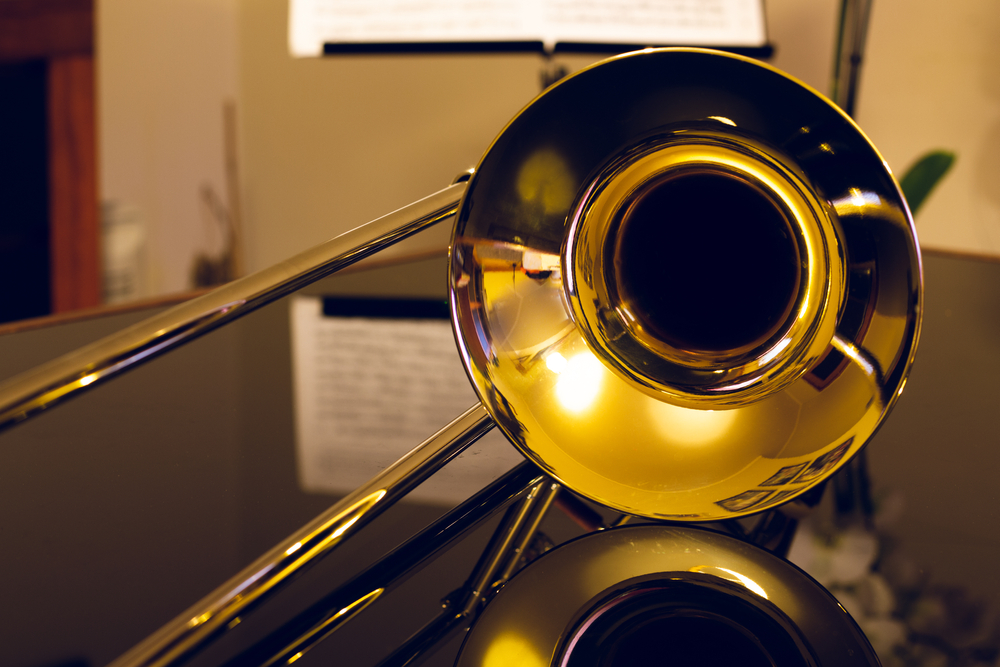
This iconic piece from the musical “The Music Man” is an absolute must for beginning band students! You’ll love the catchy melody and triumphant sound that makes everyone want to march along.
The song features a lively, upbeat tempo that will get your students excited about playing. With its recognizable tune, they’ll feel accomplished when they can play something their parents and grandparents might recognize!
Sheet music for Seventy Six Trombones is widely available and often arranged specifically for beginning bands. Many arrangements include simplified parts that make it accessible while still sounding impressive.
When teaching this piece, focus first on the main melody which is fairly straightforward rhythmically. The march style provides excellent practice for young musicians to maintain steady tempo.
Your percussion section will particularly enjoy this piece! The march format gives them clear patterns to follow and helps reinforce basic timing skills.
Consider having your students listen to a recording of the piece before playing it. This helps them understand the energy and style they should aim for in their performance!
3. American Patrol by F.W. Meacham
You’ll absolutely love introducing your band to this iconic American classic! Written by Frank White Meacham in 1885 as a piano piece, it was later arranged for wind band in 1891 and has remained a staple in band repertoire ever since.
The piece brilliantly incorporates patriotic American melodies like “Columbia, the Gem of the Ocean” and “Dixie” alongside Meacham’s original themes. Your students will connect with these familiar tunes while learning important band skills!
What makes this piece perfect for beginners? The “patrol” format! It starts with a simple drum cadence that sounds like a band approaching from a distance. This gives your percussion section a chance to shine while creating an exciting buildup.
The melody is catchy and accessible, with predictable phrases that help students develop their sense of musical structure. You’ll find it’s an excellent piece for teaching dynamics as the music mimics a band approaching, passing by, and fading away.
Glenn Miller’s famous 1942 big band version might inspire your students too! Play it for them before you start learning the piece to build excitement.
4. Bugler’s Holiday by Leroy Anderson
Get ready to dazzle your audience with this spectacular trumpet showcase! Bugler’s Holiday is one of Leroy Anderson’s most beloved compositions and a true crowd-pleaser that will have everyone tapping their feet.
Originally written for three trumpets and orchestra in 1954, this virtuoso piece has become a staple for Independence Day celebrations across America! You’ll love how the bright, bouncy melody shows off your trumpet section’s skills while keeping the audience thoroughly entertained.
Don’t worry if you don’t have three star trumpeters yet! This versatile composition has been adapted for virtually every instrument imaginable, making it perfect for showcasing your band’s strongest section.
The catchy tune and intricate rhythms are quintessential Anderson, who was famous for creating accessible yet sophisticated music. Your students will build technical skills while having an absolute blast playing this upbeat number!
When practicing, focus on precision and clean articulation – the piece moves quickly! Start slowly and gradually increase the tempo as your confidence builds. Breaking it down into smaller sections helps make this exciting piece more manageable for first-year players.
5. March Slave by Pyotr Ilyich Tchaikovsky
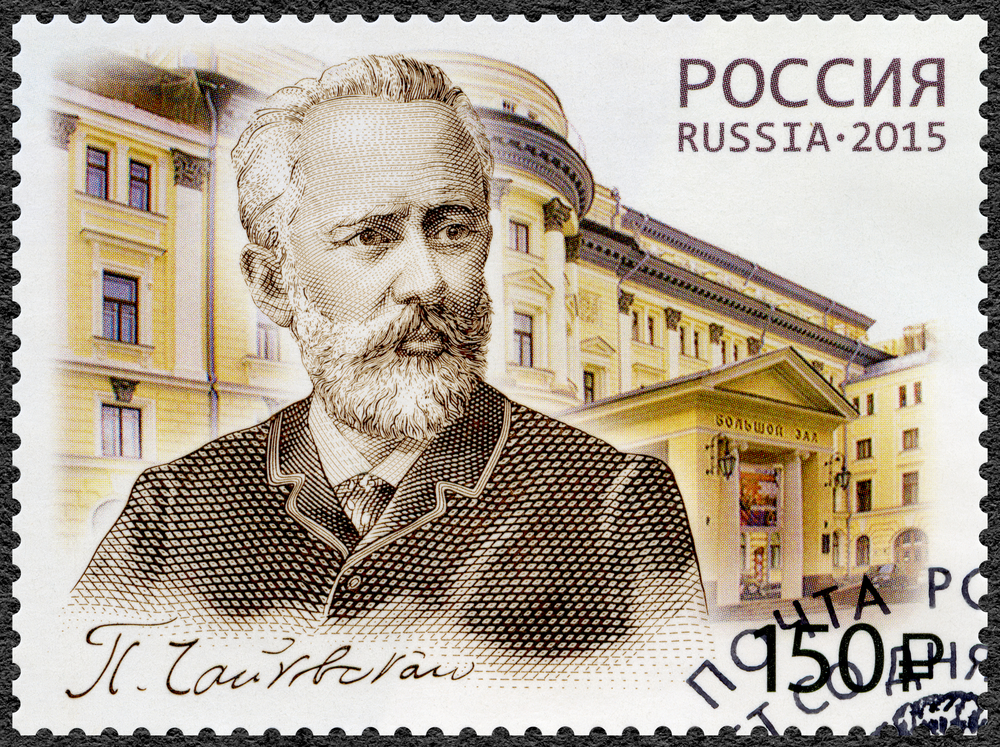
Tchaikovsky’s Marche slave is an electrifying orchestral piece that will get your students energized about classical music! Written in 1876 to celebrate Russia’s intervention in the Serbo-Ottoman War, this dynamic composition showcases Tchaikovsky’s brilliant melodic talents.
When introducing this piece to your first-year band, you’ll find it offers wonderful opportunities for developing dynamic control. The contrasting sections allow students to experience both delicate and powerful playing techniques in a single work!
The B-flat minor tonality makes this piece particularly accessible for young musicians. You can find numerous sheet music arrangements specifically adapted for student bands that maintain the piece’s dramatic character while simplifying some technical challenges.
Your percussion section will absolutely love this one! The march rhythm gives them plenty of exciting moments to shine and develop their ensemble timing skills.
Consider starting with just the main theme before adding the more complex middle sections. This approach helps build student confidence while keeping them engaged with immediate musical satisfaction!
For a truly inspiring experience, play a professional orchestra recording before your students begin learning it. This helps them connect with the majestic and powerful qualities that make this march so thrilling!
6. Simple Symphony by Benjamin Britten
Oh, you’re going to absolutely love introducing your students to this gem! The Simple Symphony was composed by Benjamin Britten between 1933 and 1934, using musical ideas he wrote as a child. How cool is that?
Your students will be instantly captivated by the playful movement titles: “Boisterous Bourrée,” “Playful Pizzicato,” “Sentimental Saraband,” and “Frolicsome Finale.” These descriptive titles make the music immediately accessible and fun!
The piece works brilliantly for beginning players because, as the title suggests, it’s deliberately “simple” in structure. Your students can easily grasp the melodic themes while still feeling accomplished playing real classical music!
Originally written for string orchestra, there are wonderful band arrangements available that maintain the charm of Britten’s work. The orchestral version conducted by Steuart Bedford provides an excellent reference recording for your students.
What makes this piece especially valuable is how it introduces different playing techniques – particularly in “Playful Pizzicato” – in an engaging way. Your students will develop their technical skills without even realizing they’re practicing!
7. Theme from the New World Symphony by Antonin Dvořák
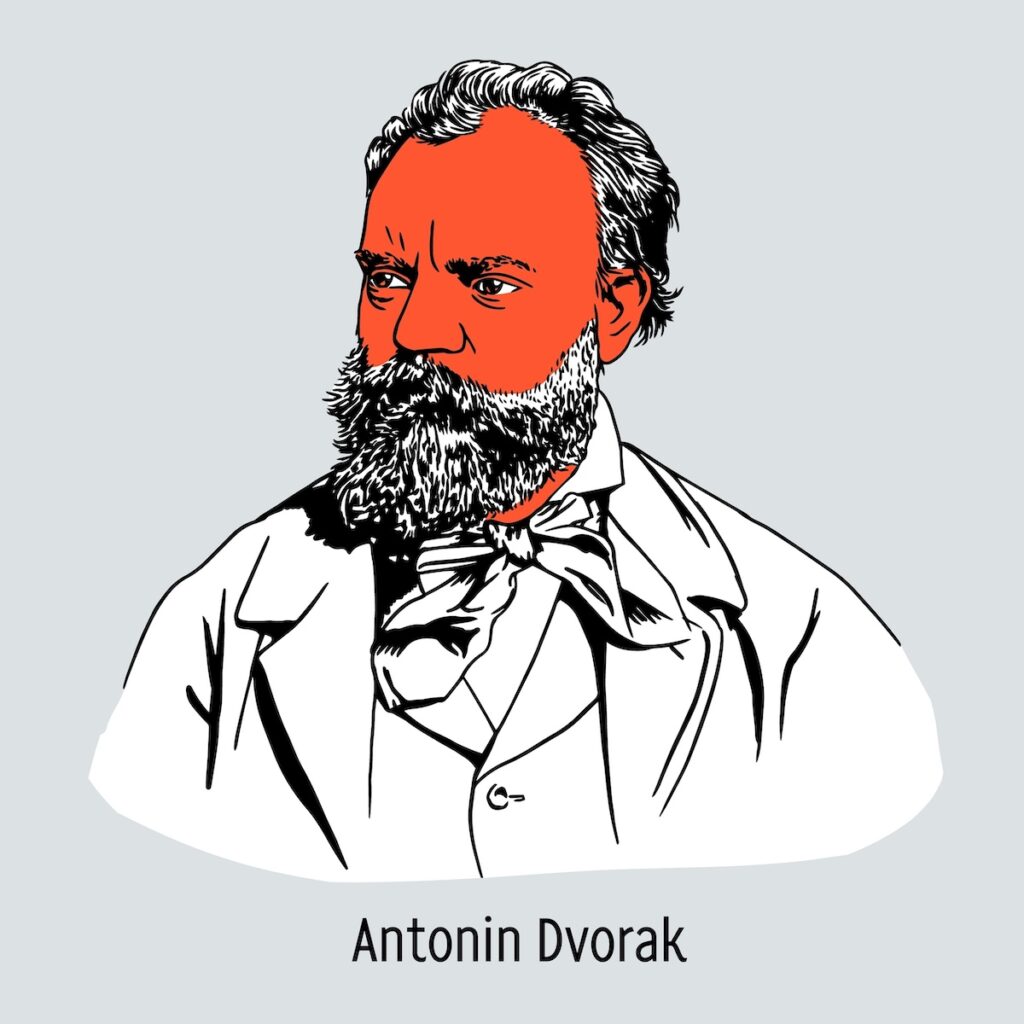
Dvořák’s Theme from the New World Symphony is an absolutely perfect addition to your first-year band repertoire! This melody comes from the famous Largo second movement of his Symphony No. 9, composed in 1893 while Dvořák was director of the National Conservatory of Music of America.
You’ll be playing one of the most recognizable melodies in classical music! The theme features a beautiful, singable quality that will help you develop your expressive playing and breath control. Its gentle 4/4 time signature makes it accessible for beginners.
Did you know this symphony was the first major American composition? It draws inspiration from Native American and African American musical traditions that Dvořák encountered during his time in the United States.
When learning this piece, focus on creating smooth, connected phrases. The melody’s simple rhythm allows you to concentrate on tone quality and dynamics. Try listening to different orchestral recordings to hear how professional musicians shape the phrases.
This piece works wonderfully as a full band arrangement or for smaller ensembles. You’ll find that audiences instantly connect with this beloved melody, making it a rewarding performance piece for your concerts!
8. Colonel Bogey March by Kenneth Alford
You’ve probably whistled this catchy tune without even knowing its name! The Colonel Bogey March was composed in 1914 by Kenneth J. Alford (a pen name for Frederick Joseph Ricketts) and became wildly popular after being featured in the film “Bridge on the River Kwai.”
This march is perfect for first-year band students because it has a straightforward rhythm and memorable melody that will keep you engaged during practice sessions! The piece starts with a distinctive whistling motif that your whole band will love learning.
When tackling this piece, focus first on mastering the main theme. The sheet music is widely available in simplified arrangements specifically designed for beginning bands. You’ll find it’s an excellent way to develop your marching style while maintaining proper timing.
Your conductor might start rehearsals with just a single snare drum and flutes, gradually adding other instruments as you progress. This building-block approach makes it less intimidating for new players!
The audience will instantly recognize this exciting piece, making it a guaranteed crowd-pleaser at your first concert. What an amazing confidence booster for your band’s performance!
9. Entry of the Gladiators by Julius Fučík
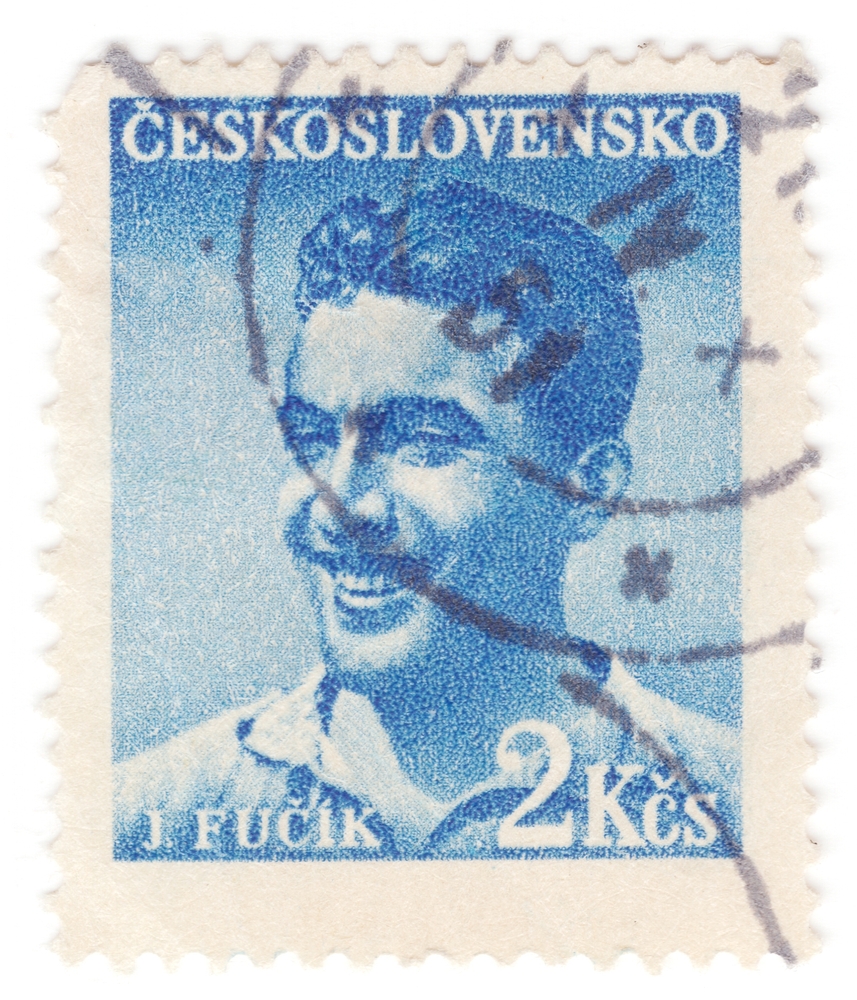
Get ready to wow your audience with this energetic, instantly recognizable piece! Entry of the Gladiators was composed in 1897 by Czech composer Julius Fučík as a military march. You might know it better as “the circus song” that plays when clowns enter the ring!
This piece is perfect for first-year band students because it features straightforward rhythms with an exciting, chromatic melody that will help you develop your technical skills. The upbeat tempo makes it a crowd-pleaser that will have your audience tapping their feet along with the music!
Originally titled “Grande Marche Chromatique,” this famous march offers excellent practice for your chromatic scale mastery. You’ll love how the triumphant brass parts contrast with the bouncy woodwind sections!
Sheet music for Entry of the Gladiators is widely available in arrangements suitable for various skill levels. Your band director can find simplified versions that maintain the piece’s exciting character while being accessible to beginners.
When practicing, focus on maintaining a steady tempo and crisp articulation to capture the piece’s spirited military march feel. Your audience will instantly recognize this thrilling classic!
10. Pineapple Poll by Arthur Sullivan
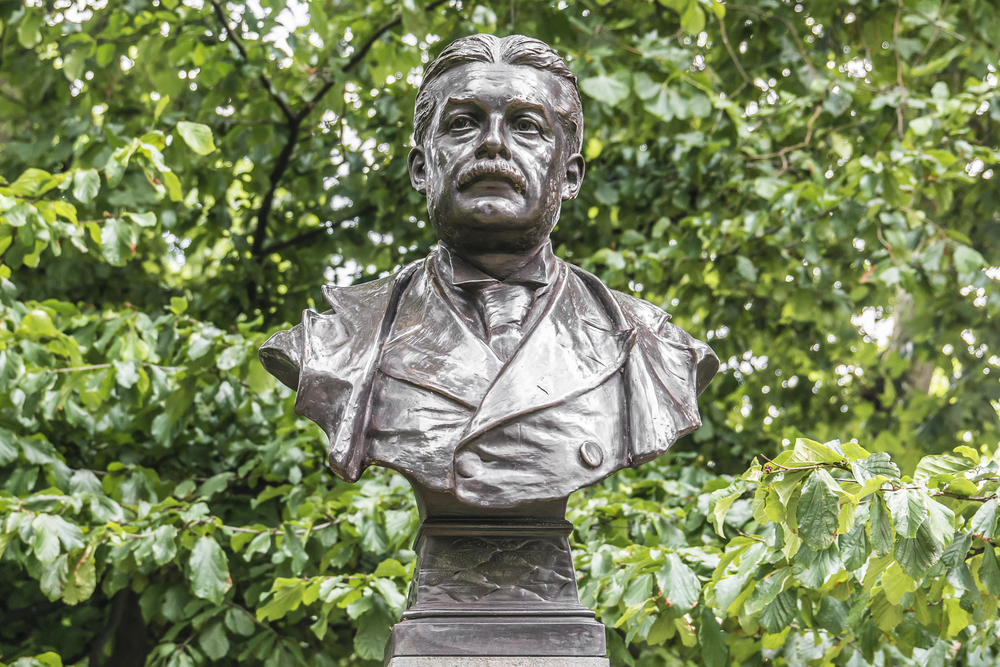
Pineapple Poll is an absolute gem for first-year band students! This delightful ballet suite was arranged by Charles Mackerras using melodies from Arthur Sullivan’s comic operas, creating a lively and engaging piece your students will love.
The music features memorable tunes with clear, distinct melodies that beginners can grasp easily. Your students will enjoy playing the vivacious dance sections that make this piece so charming and accessible.
The suite includes several movements like “Opening Dance” and “Poll’s Solo,” giving you flexibility to choose sections that best match your band’s skill level. Each movement offers different musical challenges without overwhelming new players.
What makes Pineapple Poll especially valuable is how it introduces students to Sullivan’s brilliant orchestration in a fun, approachable format. The brass and military elements provide exciting opportunities for your percussion and brass sections.
When teaching this piece, start with the simpler sections before tackling the more complex movements. The Alfred Music Publishing arrangement is particularly well-suited for young bands, with thoughtful adaptations that preserve the music’s character while remaining playable for beginners.
11. Blue Tango by Leroy Anderson
Get ready to add some Latin flair to your band’s repertoire with Blue Tango! This piece is absolutely perfect for first-year students looking to explore different musical styles. Written in 1951, it became Leroy Anderson’s breakout hit and was the first instrumental to sell 1 million copies!
You’ll love how this piece introduces your students to the tango rhythm in an accessible way. The catchy melody makes it fun to practice, while the moderate tempo allows beginners to keep up without feeling overwhelmed.
When teaching Blue Tango, focus first on getting the distinctive tango rhythm correct. Have your students listen to the original recording to get a feel for the style and articulation that makes this piece special.
What’s fantastic about Blue Tango is its versatility! Anderson originally wrote it for full orchestra but later transcribed it for concert band, making it perfectly suited for your ensemble.
Your percussion section will particularly enjoy the rhythmic elements, while melody instruments get to shine with the memorable tune. Piano students can even learn it as a solo piece if they want extra practice!
12. Liberty Bell March by John Philip Sousa
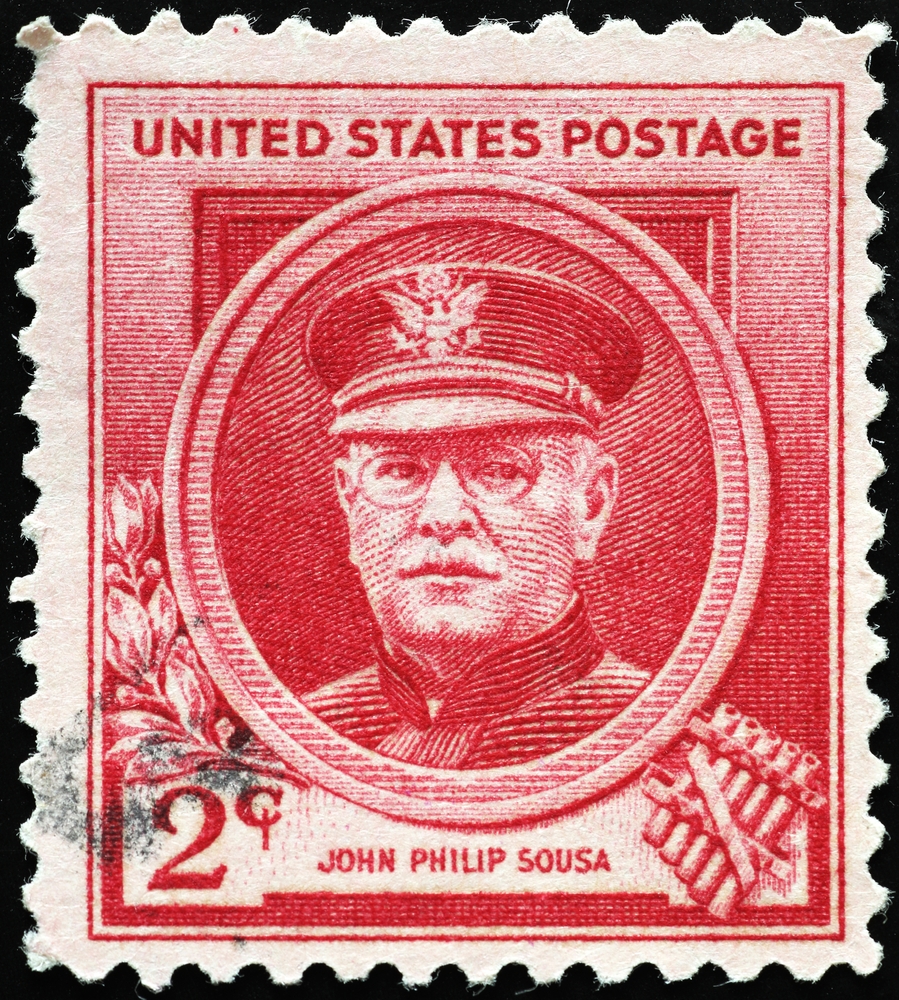
This iconic march is perfect for your first-year band experience! Written by the “March King” himself, The Liberty Bell offers just the right balance of challenge and accessibility for developing musicians.
Did you know this piece was one of Sousa’s first financially successful compositions? The Liberty Bell March was sold to the John Church Company and became an immediate hit with audiences everywhere!
You might recognize this energetic tune as the theme from Monty Python’s Flying Circus! This fun fact will surely keep you motivated during practice sessions.
The march features memorable melodies that are catchy and approachable. You’ll love how the different sections get moments to shine throughout the piece!
When learning this march, focus first on mastering the rhythmic precision that makes Sousa’s music so distinctive. The crisp articulations will really help develop your technique.
Try listening to the United States Marine Band’s recording for inspiration. Their performance showcases the perfect balance and style you’ll want to emulate.
13. Fanfare and Flourishes by James Curnow
Looking for an attention-grabbing concert opener? Fanfare and Flourishes by James Curnow will absolutely electrify your audience! Based on Charpentier’s famous Te Deum, this piece immediately commands attention with its bold brass sections and brilliant woodwind passages.
You’ll love how this piece showcases different sections of your band. The powerful brass fanfares give your trumpet and trombone players a chance to shine, while the woodwinds get to demonstrate their technical abilities with exciting flourishes.
What makes this piece perfect for first-year bands is its accessibility despite its impressive sound. The dramatic opening and triumphant themes are incredibly rewarding to perform, giving your students an immediate sense of accomplishment!
When learning this piece, focus first on the fanfare sections with your brass players. The confident, declarative nature of these parts builds tremendous confidence in young musicians. Your woodwind players will enjoy the technical challenges that sound much harder than they actually are!
This piece is available in multiple arrangements, making it suitable for various skill levels. Start your next concert with this fantastic piece, and you’ll definitely have your audience sitting on the edge of their seats!
14. The Syncopated Clock by Leroy Anderson

This delightful piece will bring immediate smiles to your band and audience! Leroy Anderson’s The Syncopated Clock is a perfect introduction to syncopation and rhythm for first-year players.
You’ll love how this catchy tune teaches important musical concepts while remaining incredibly fun to play! The piece features a distinctive “tick-tock” rhythm that mimics a clock with an unexpected syncopated beat thrown in.
Did you know Anderson actually came up with the title before writing the music? The concept of a clock with syncopated rhythm inspired him to create this memorable melody that has remained popular for decades!
The piece offers excellent opportunities for your percussion section to shine with those iconic clock sounds. Plus, many arrangements include optional percussion and piano parts that add wonderful texture to your band’s performance.
When learning this piece, focus on maintaining steady tempo while nailing those syncopated moments. You can find sheet music available in D Major, making it accessible for beginning players while still providing an engaging musical challenge.
15. Light Cavalry Overture by Franz von Suppé
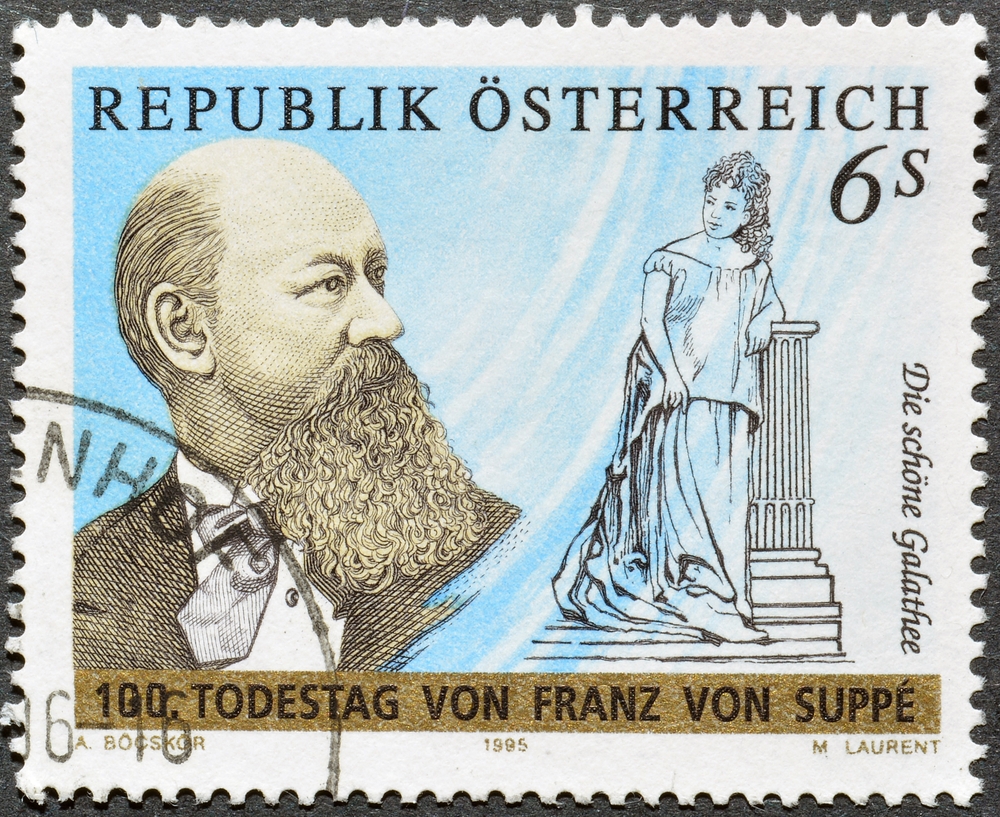
The Light Cavalry Overture is one of the most thrilling pieces for your young band to tackle! Written in 1866 as part of an operetta, this famous overture has taken on a life of its own in the concert band world.
You’ll love the dramatic contrasts between the gentle opening and the famous galloping cavalry theme. That iconic trumpet fanfare gets everyone’s attention and gives your brass players a moment to shine!
This piece is particularly fantastic for developing your ensemble’s sense of rhythm and precision. The galloping sections truly sound like horses charging into battle when played with crisp articulation!
Many junior high and high school bands perform this piece, making it perfect for first-year students looking for an exciting challenge. The percussion parts add tremendous excitement and help drive the piece forward.
You can find free sheet music versions online to explore before purchasing arrangements specifically designed for young bands.
Start by listening to different recordings to get the feel of the piece. Work on those rhythmic patterns slowly before gradually increasing the tempo. Your audience will be blown away when your band charges through this exhilarating classic!
16. The Washington Post March by John Philip Sousa
Get ready to introduce your band to one of the most iconic marches of all time! The Washington Post March was composed by John Philip Sousa in 1889 and has remained incredibly popular ever since.
Your students will love the catchy melody and energetic rhythm of this piece. The recognizable main theme is perfect for beginning band students as it helps them develop a strong sense of march timing and style.
What makes this piece especially great for first-year students is its straightforward structure. The primary melodic lines are accessible for newer players while still offering enough interest to keep them engaged and excited.
When teaching this piece, focus first on the main melody with your trumpet or clarinet sections. The United States Army Field Band’s performance provides an excellent reference for your students to hear how it should sound.
You’ll find this march particularly helpful for developing your percussion section’s skills. The steady beat gives young drummers a chance to practice maintaining consistent tempo throughout a piece.
Sheet music is widely available, often with simplified arrangements perfect for beginning bands. Your students will feel a tremendous sense of accomplishment when they master this famous piece of American musical heritage!
17. Concertino for Marimba and Band by James Ching

This exciting piece showcases the marimba as a solo instrument against the backdrop of a concert band! Your percussion students will absolutely love the opportunity to shine with this challenging and rewarding marimba solo.
The Concertino features beautiful melodic lines that dance across the marimba, requiring your soloist to develop both technical facility and expressive playing. What makes this piece special is how it introduces your band to supporting a featured performer!
When learning this piece, focus first on the second movement, which is marked “Calm” and features a beautiful flute introduction followed by chordal structures on the marimba. This section is more accessible while still sounding impressive.
Have your percussion section rotate through the solo part during rehearsals to build their skills. The piano reduction is perfect for initial practice before combining with the full band.
Don’t worry if you can only perform selections from the Concertino – even individual movements sound complete and will wow your audience! This piece will elevate your first-year band’s understanding of texture and accompaniment skills.
18. English Folk Song Suite by Ralph Vaughan Williams
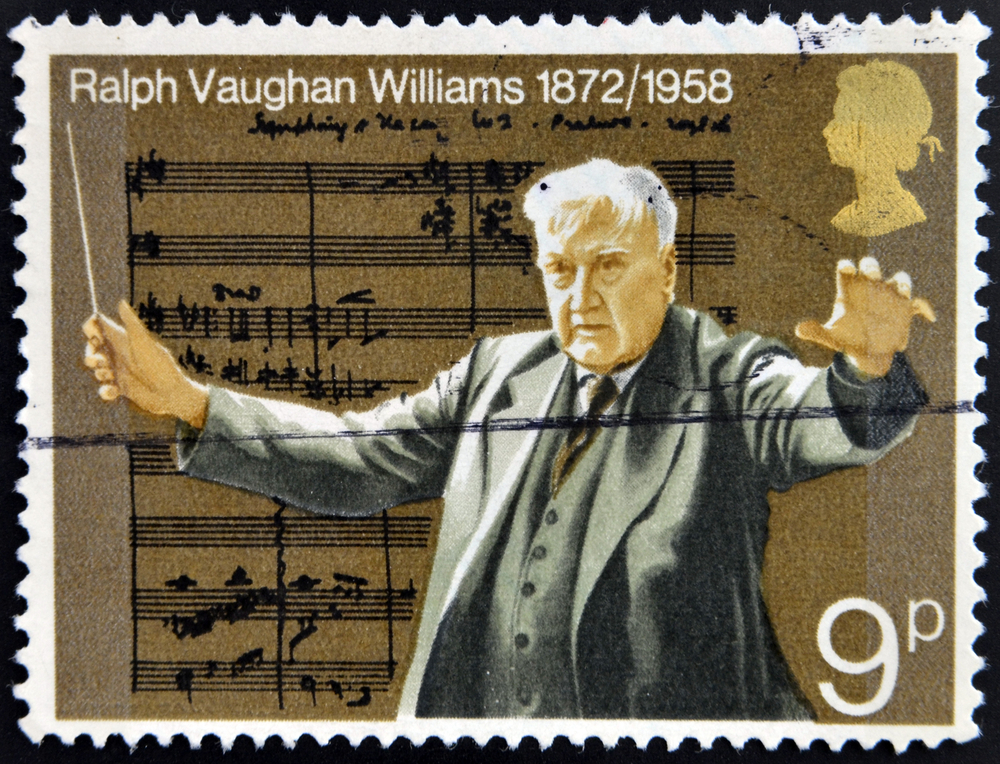
You’re in for a treat with this incredible suite! The English Folk Song Suite is one of Ralph Vaughan Williams’ most celebrated works, and it’s perfect for ambitious first-year bands.
Originally composed for military band in 1923, this magnificent piece had its premiere on July 4th, 1923 at Kneller Hall. You’ll fall in love with the rich melodies based on traditional English folk tunes!
The suite typically consists of three captivating movements that showcase different folk songs. Each movement presents its own unique character and challenges that will help you develop your musicianship.
What makes this piece fantastic for your band? It offers varied tempos, dynamic contrasts, and beautiful melodies that everyone will enjoy playing. The folk elements make it accessible while still being musically rewarding.
When learning this piece, focus first on the melodic sections within your instrumental part. The YouTube performances are excellent references to understand how your part fits into the whole ensemble.
This piece is available in arrangements of various difficulty levels, so you can find one that matches your band’s abilities. Its enduring popularity means you’ll find plenty of recordings to inspire your interpretation!
19. The Pink Panther Theme by Henry Mancini
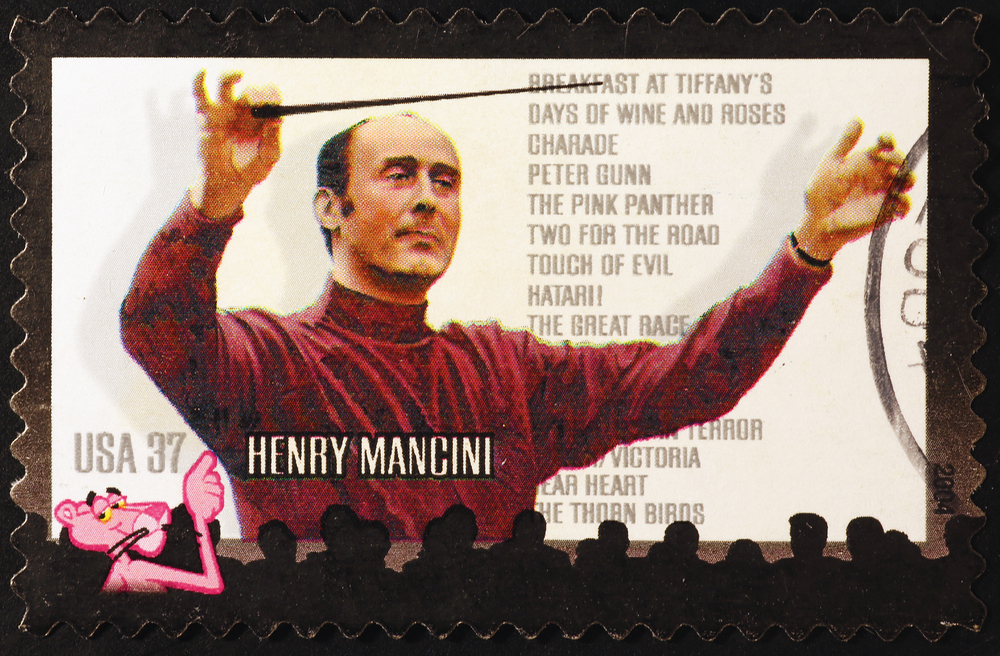
Get ready to add some mystery and playfulness to your band repertoire with The Pink Panther Theme! This iconic piece by Henry Mancini has captivated audiences since its creation in 1963 and remains instantly recognizable today.
You’ll fall in love with the sneaky, chromatic melody that perfectly captures the essence of the cartoon character. The saxophone takes center stage in this piece, making it perfect for highlighting your woodwind section’s skills!
What makes this piece fantastic for first-year band students is its moderate tempo and repetitive phrases. You can focus on developing your articulation and dynamics while playing something that’s genuinely fun and engaging.
The Pink Panther Theme is widely available in sheet music arrangements specifically adapted for beginning bands. Many versions include simplified parts that maintain the iconic sound while being accessible to newer players.
When learning this piece, pay special attention to the staccato notes and smooth chromatic runs. Your director might have you practice these sections slowly before bringing them up to speed.
Your audience will immediately recognize this legendary soundtrack piece, making it a guaranteed crowd-pleaser at your concerts!
20. Celebration and Song by Robert W. Smith
Robert W. Smith’s “Celebration and Song” is an exhilarating piece that’s perfect for your first-year band! This composition strikes an amazing balance between technical accessibility and musical satisfaction that will make your students feel accomplished.
The piece draws on Smith’s extensive experience creating works for young musicians. As one of the most programmed composers for bands across North America, Smith knows exactly what works for beginners while still sounding impressive!
You’ll find that the melodic lines are memorable and engaging, giving your students something they’ll be excited to practice. The percussion parts add festive energy without overwhelming the band’s overall sound.
When teaching this piece, focus on the contrasting sections between the “celebration” and “song” elements. This gives you a perfect opportunity to work on dynamics and articulation with your young musicians.
Smith’s inspiration often comes from meaningful moments, similar to how he created “Dance Celebration” after watching his daughters’ dance recital. This personal connection makes his music especially relatable for students.
Your audience will love this piece at concerts, and your students will build crucial ensemble skills while having a blast! It’s the perfect way to showcase your band’s progress during their first year.
21. Russian Sailors Dance by Reinhold Glière
This energetic and spirited piece is a perfect addition to your first-year band repertoire! Originally composed as part of Glière’s ballet “The Red Poppy” in 1926, this Russian Sailors’ Dance (also known as “Yablochko”) has become a beloved concert band staple.
You’ll love how this piece starts with a dramatic, marcato opening that immediately grabs the audience’s attention! The melody is catchy and builds in intensity, making it a crowd-pleaser that will have your listeners tapping their feet.
What makes this piece particularly great for beginners is that each section gets a chance to shine! The arrangement includes active percussion parts and interesting tempo changes that will challenge and engage your entire band.
Don’t worry about it being too difficult! There are several accessible arrangements specifically designed for young beginners. The rhythmic patterns are repetitive enough to be learnable but varied enough to keep you interested.
When practicing, focus on the syncopated rhythms and dynamic contrasts. Start slowly and gradually increase the tempo as your confidence builds. You’ll be amazed at how quickly your band can master this exciting Russian classic!
22. Chester by William Billings
This Revolutionary War anthem is perfect for your beginning band! “Chester” combines historical significance with an accessible melody that first-year students can master. The march-like introduction creates immediate excitement before launching into the recognizable main theme.
You’ll love how William Billings’ patriotic tune has been specially arranged for first-year players! The strong melody and energetic drive make this piece incredibly rewarding to perform. Your students will feel accomplished as they bring this early American classic to life!
The arrangement is skillfully paced and perfectly scored for beginners, allowing your band to shine without overwhelming them with technical challenges. The antiphonal statement of the theme creates wonderful musical interest across your ensemble.
When learning this piece, focus first on mastering the rhythm before adding melody. This approach will help your students build confidence with the piece’s energetic pulse.
“Chester” is sure to become a standard in your beginning band repertoire! It’s absolutely perfect for festivals or patriotic concerts, giving your students a chance to showcase their developing skills while connecting with America’s musical heritage.
23. Simple Gifts arranged by Jay Bocook
This beloved Shaker hymn arrangement by Jay Bocook is absolutely perfect for your first-year band! The piece starts with a light, lilting opening that’s approachable for beginners before building to a magnificent full band presentation.
You’ll love how Bocook takes this familiar melody and transforms it with different settings, including a gorgeous minor key variation that adds dramatic contrast. The melody builds to a soaring presentation that will make your band sound impressive even with limited experience!
The gradual build in complexity gives you wonderful opportunities to work on dynamics and expression with your students. Each section gets memorable moments to shine!
When practicing, focus first on the beautiful main melody that everyone will recognize. This familiarity helps build student confidence before tackling the more challenging variations.
Jay Bocook is known for his exceptional arrangements that showcase young musicians at their best. His thoughtful scoring ensures that all instrument sections have accessible but rewarding parts.
Your audience will immediately connect with this timeless tune, making it a guaranteed crowd-pleaser at your first concert. The piece’s emotional resonance and beautiful structure make it an essential addition to your first-year repertoire!
24. American Salute by Morton Gould
Are you looking for a patriotic piece that will inspire your band students? American Salute is an exciting orchestral work composed by Morton Gould in 1942 during World War II!
This classic piece builds a magnificent tribute to American spirit by working with the folk melody “When Johnny Comes Marching Home”. Your students will immediately recognize this catchy tune, making it more engaging for them to learn!
Though challenging, this piece is absolutely worth the effort for your first-year band. The transcription by Philip Lang adapts the orchestral work beautifully for concert band settings, giving your students exposure to professional-level arrangements.
You’ll find that American Salute develops and embellishes the folk melody with splendor and verve. It’s perfect for patriotic concerts and gives your students a chance to showcase their growing technical abilities.
When introducing this piece, start by having your students listen to recordings first. Break down the different variations of the melody before attempting to play it together. The running time is approximately 4:31, making it a substantial but manageable addition to your concert program!
25. Festive Overture by Dmitri Shostakovich

Shostakovich’s Festive Overture is an absolute gem for first-year band students! This thrilling piece composed in 1954 starts with a fanfare that will make your heart race with excitement.
When you play this piece, you’ll experience the joy of Shostakovich’s brilliant orchestration. The contrast between the majestic brass sections and the playful, nimble woodwind passages creates wonderful learning opportunities for students in every section of your band.
Don’t be intimidated by Shostakovich’s reputation for complex music! This enduring occasional score was actually written very quickly for a celebration of the October Revolution, making it more accessible than many of his other works.
You’ll find sheet music readily available in adaptations for beginning bands. Look for simplified arrangements that maintain the exciting character of the original while accommodating developing technical skills.
When learning this piece, focus first on the fanfare sections to build confident brass playing. Then tackle the faster middle sections by practicing slowly and gradually increasing the tempo. Your audiences will love the triumphant, celebratory feeling this piece brings to any concert program!

